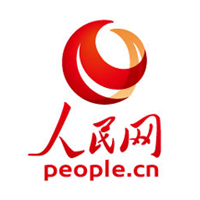Original title: Barcode payment interconnection continues to advance, how to better facilitate code scanning consumption?
JD Pay recently announced that consumers can use JD Financial App to scan WeChat collection code for payment and consumption. The cooperation between the two platforms, which have a large and active user base, is another new progress in China's bar code payment interconnection.
In recent years, China's bar code payment interconnection has been continuously promoted, technical specifications have been implemented, payment processes have been simplified, and high-quality development of the payment industry has been assisted. How to further break down service barriers, expand ecological openness and facilitate people's code scanning consumption in the future?
Looking at China's mobile payment, the penetration rate has reached 86%, ranking first in the world, and has played an important role in improving transaction efficiency, reducing transaction costs and promoting financial inclusion.
On this basis, the continuous promotion of barcode payment interconnection can effectively integrate complex code cards, allow consumers to use a variety of different payment apps, scan the same code card to pay, and improve convenience.
"Accelerating the promotion of connectivity in the payment field will not only help build a unified national market, but also serve the real economy and implement the concept of" payment for the people ", help protect consumers' choice, improve consumer experience, and promote the high-quality development of the digital economy and digital finance." said Dong Ximiao, the chief researcher of China Merchants Confederation.
At the end of 2019, China Netlink launched its first interconnection transaction in Ningbo, and completed the first verification of standardized bar code interconnection between banks and inter institutional central banks in Hangzhou in January 2020.
Since then, China's bar code payment interconnection has continued to advance. At present, the cloud flash payment app launched by China UnionPay has been interconnected with Alipay, WeChat payment and other platforms; WeChat payment has achieved barcode payment interconnection with nearly 30 banks, including industry, agriculture, China, construction, transportation and postal savings, and wallet apps of three major telecom operators
In terms of cross-border payment, Alipay and Tenpay launched the "outsourcing for internal use" payment scheme, which supports some overseas electronic wallets to pay directly by scanning Alipay and WeChat code cards in China.
The interconnection in the payment field requires not only institutional norms and unified standards, but also user privacy and data security.
At present, relevant technical specifications have been issued, which has become the institutional guarantee for interconnection. At the end of 2021, the People's Bank of China issued the Technical Specification for Barcode Payment Interconnection, which stipulates the coding rules, message elements, security requirements and other contents of barcode payment interconnection on the premise of ensuring the security of user information and funds.
Focusing on data security, in the development process of mobile payment, due to the fact that the bar codes of various institutions were once not universal, aggregate payment came into being. Aggregated payment service providers often do not have payment business licenses, but actually engage in some payment businesses, resulting in certain potential risks.
Wang Jian, the assistant director of Guosen Securities Economics Research Institute, said that licensed payment institutions have significant advantages in transaction specification, security technology, data protection, etc. The promotion of barcode payment interconnection helps to identify, share and prevent risk information, and improves the security of mobile payment system.
Looking forward to the future, Dong Ximiao believes that although the bar code payment interconnection has achieved rapid development in recent years, it still lags behind the market demand on the whole. Alipay and WeChat payment, which have the highest market share and the largest user group, have not really achieved interconnection, and there are still obstacles to the interconnection between bank payment and non bank payment.
The Regulation on the Supervision and Administration of Non bank Payment Institutions came into force on May 1 this year. Zhang Qingsong, Vice President of the People's Bank of China, said at the State Council's regular policy briefing earlier that the regulations emphasize the maintenance of fair competition order, which is conducive to guiding the head payment institutions to play a good role as "head geese", pay more attention to industry interests, social interests and public interests, take the lead in maintaining fair competition, promoting connectivity, and expanding ecological openness.
Experts suggest that relevant departments should introduce more targeted measures from the perspective of system and technology to strengthen the guidance and protection of payment institutions and commercial banks; Payment institutions should raise awareness and strengthen promotion; All regions should break local protection, break down payment barriers, and help realize payment interconnection nationwide. At the same time, we should also accelerate the pilot work of digital RMB, enrich the application scenarios of digital RMB, and provide consumers with more safe and convenient payment options. (Xinhua News Agency reporter Zhang Qianqian)
(Editor in charge: Li Qiangqiang, Luo Yu)
Share to let more people see


































